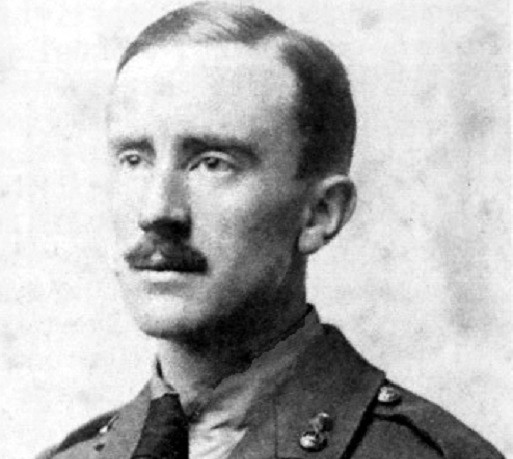The Story of Kullervo: Inspiration behind JRR Tolkien's 'darkest' first fantasy work

To the delight of Tolkien fans, what is believed to be the first fantasy story ever penned by the Lord of the Rings author will be made available to the public this week. The Story of Kullervo – which helped lay the foundations for J.R.R Tolkien's Middle-earth Legendarium – will be published for the first time since it was written over 100 years ago.
Tolkien started writing The Story of Kullervo in 1914, during his college days at Oxford University. Described by publishers and academics as one of the darkest tales ever written by the author, it is a retelling of part of the Finnish epic poem The Kalevala, one of the most significant works of Finnish literature compiled by Elias Lönnrot in 1849.
The retelling of the Kalevala follows the tragic story of "Hapless Kullervo", an orphaned boy with supernatural powers who unwittingly seduces his sister before committing suicide. Believed to be Tolkien's first work of prose fantasy, it delves into the author's fascination with lost myths and the preservation of folklore.
Tolkien described The Story of Kullervo as the "germ of my attempt to write legends of my own" - and it is a foundation stone of Tolkien's invented world. The character of Kullervo is the ancestor of Túrin Turambar, an important character in Tolkien's legendarium who features as the protagonist in the fantasy novel The Children of Hurin and who appears in Tolkien's collection of mythopoeic works, The Simarillion.
Vincent Ferre, professor of comparative literature at University Paris Est- Créteil told AFP The Story of Kullervo is the "first time that J.R.R Tolkien, who had been a poet until then, began writing prose."

"We could say Tolkien is finding his feet," Ferre said. "He ultimately leaves the story to one side without finishing it, switching to write more personal and original works."
In order to read Lönnrot's Kalevala, Tolkien learnt Finnish. Fascinated by ancient languages, he described Finnish as "like discovering a complete wine-cellar filled with bottles of an amazing wine of a kind and flavour never tasted before" – adding he was "quite intoxicated".
It is known that the English artist and author William Morris had a profound literary impact on Tolkien. Although Morris is largely associated with the British Arts and Crafts Movement, he was a major contributor in the establishment of the modern fantasy genre and his work served as an inspiration in Tolkien's earliest fantasy prose.
In a letter to his wife-to-be and future muse Edith Bratt in October 1914, Tolkien said he was using some of Morris' literary techniques in The Story of Kullervo. "I am trying to turn out of the stories (of the Kalevala)... into a short story somewhat on the lines of Morris' romances with chunks of poetry in between," he wrote.
Although The Story of Kullervo served as a base for Tolkien's future work, the manuscript was never finished and lies in the Bodleian Library in Oxford. Since it was written, the tale has only been published in a 2010 academic paper by Verlyn Flieger, who also edited Tolkien on Fairy-Stories.
"I began to think that it deserved a wider audience than subscribers to a scholarly journal," Flieger told AFP. After consideration, the Tolkien estate granted permission. "It's his earliest mythic story, and thus a precursor of all that is to come. It is also undeniably his darkest work, and thus foreshadows the darker and more sombre aspects of his invented world."
The publishing of the Story of Kullervo follows the recent release of a handful of previously unpublished works by Tolkien, including his translation of Beowulf last year and The Children of Hurin in 2007. The release of The Story of Kullervo by HarperCollins on Thursday (27 August) in the UK will be the story's first mainstream publication. It will be available in US bookshops on 27 October.
© Copyright IBTimes 2025. All rights reserved.






















